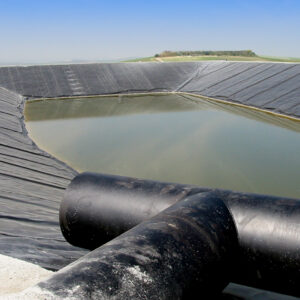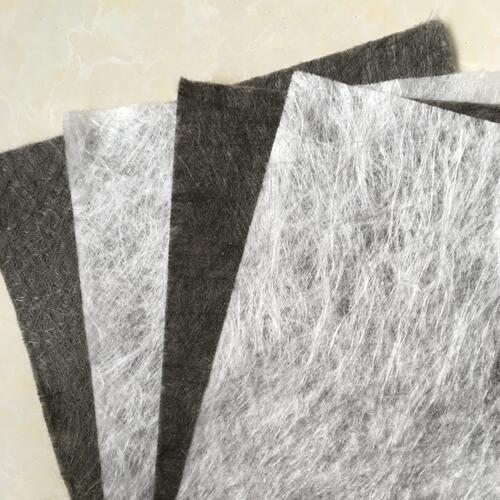What is the difference between geomembrane and geotextile?
Geomembranes and geotextiles are both materials used in geotechnical and civil engineering applications, but they serve different purposes and have distinct characteristics:
Function:
Geomembranes are impermeable membranes used primarily for containment purposes. They prevent the passage of liquids or gases and are often employed in applications such as lining ponds, landfills, reservoirs, and other containment structures.
Geotextiles, on the other hand, are permeable fabrics designed to provide filtration, separation, reinforcement, and drainage in civil engineering projects. They allow water to pass through while retaining soil particles, making them useful in applications like road construction, erosion control, and soil stabilization.
Material:
Geomembranes are typically manufactured from synthetic materials such as high-density polyethylene (HDPE), polyvinyl chloride (PVC), ethylene propylene diene monomer (EPDM), or other polymers. These materials are impermeable and offer excellent resistance to chemicals, UV radiation, and environmental factors.
Geotextiles are made from synthetic fibers (e.g., polyester, polypropylene) or natural fibers (e.g., jute, coir). They are woven, non-woven, or knitted into various forms and densities depending on the intended application.
Characteristics:
Geomembranes are characterized by their impermeability, durability, and resistance to punctures, tearing, and chemical degradation. They are available in different thicknesses and grades to suit specific project requirements.
Geotextiles possess properties such as permeability, filtration, tensile strength, and UV resistance. They come in various types, including woven geotextiles, non-woven geotextiles, and composite geotextiles, each offering different performance characteristics.
Applications:
Geomembranes are commonly used in environmental protection projects, mining operations, agriculture, and civil engineering projects where containment of liquids or gases is necessary.
Geotextiles find applications in road construction, drainage systems, erosion control, landscaping, shoreline protection, and other geotechnical and hydraulic engineering projects.
In summary, while both geomembranes and geotextiles are essential components in geotechnical engineering, they serve different functions and are chosen based on the specific requirements of the project. Geomembranes provide impermeable barriers, while geotextiles offer filtration, reinforcement, and drainage capabilities.

Which one has better waterproof performance, geomembrane or geotextile?
Between geomembranes and geotextiles, geomembranes typically offer better waterproof performance.
Geomembranes are manufactured from synthetic materials like high-density polyethylene (HDPE), polyvinyl chloride (PVC), or ethylene propylene diene monomer (EPDM). These materials are impermeable and provide excellent waterproofing properties, making them suitable for applications where preventing liquid or gas penetration is crucial, such as lining ponds, landfills, or water containment structures.
Geotextiles, on the other hand, are permeable fabrics made from synthetic or natural fibers. While geotextiles offer some level of filtration and erosion control, they are not inherently waterproof like geomembranes. Geotextiles are often used in conjunction with geomembranes to provide additional support, filtration, and drainage capabilities in various civil engineering and environmental applications.
In summary, if the primary concern is waterproofing, geomembranes are the preferred choice due to their impermeable nature and superior waterproof performance compared to geotextiles.


